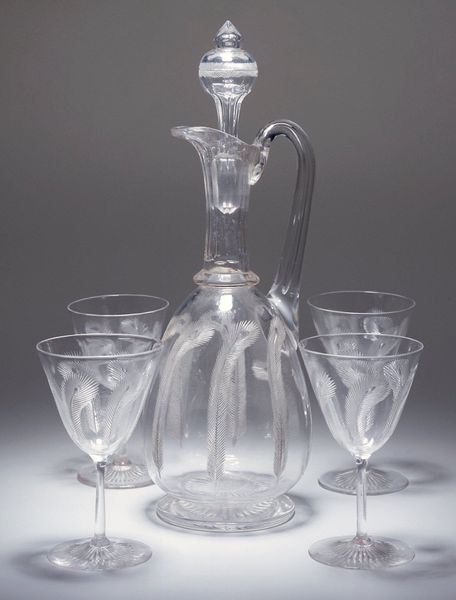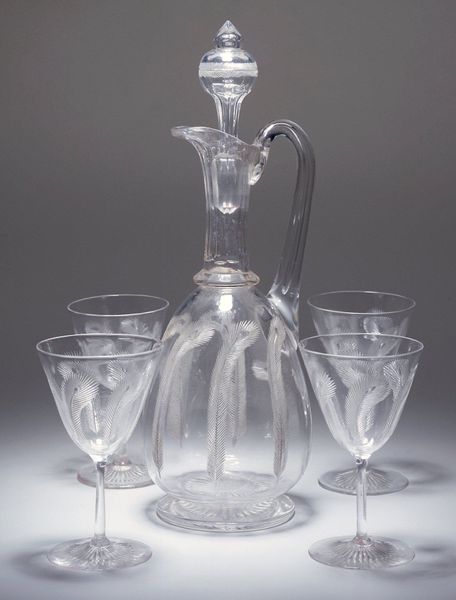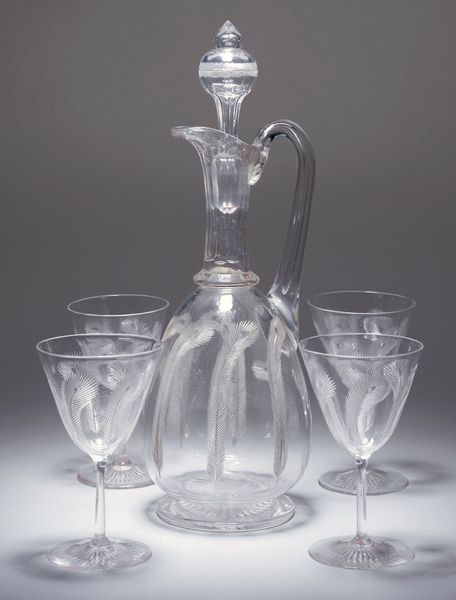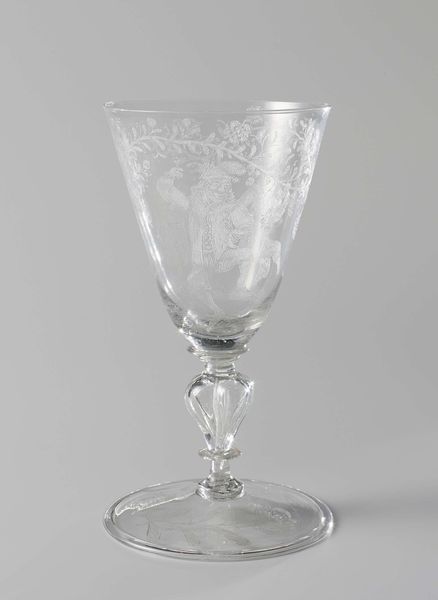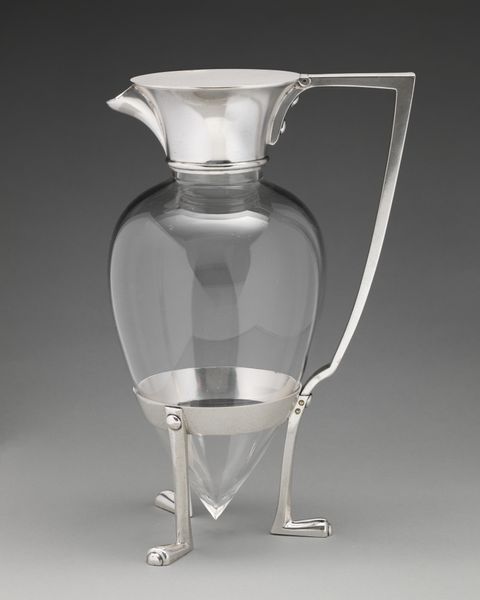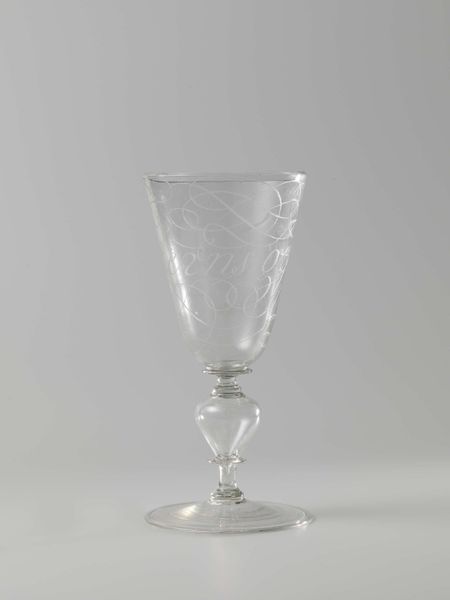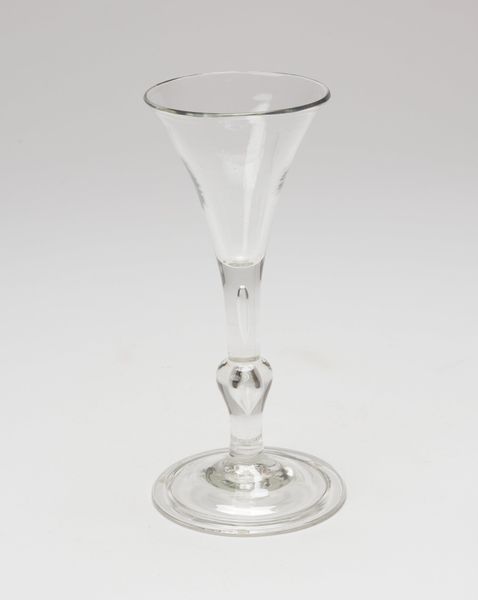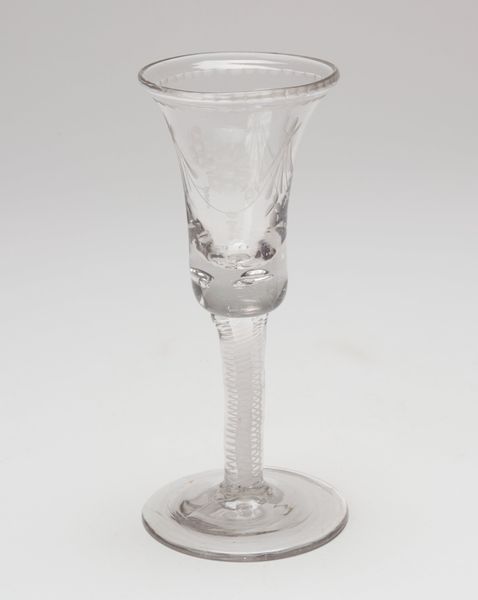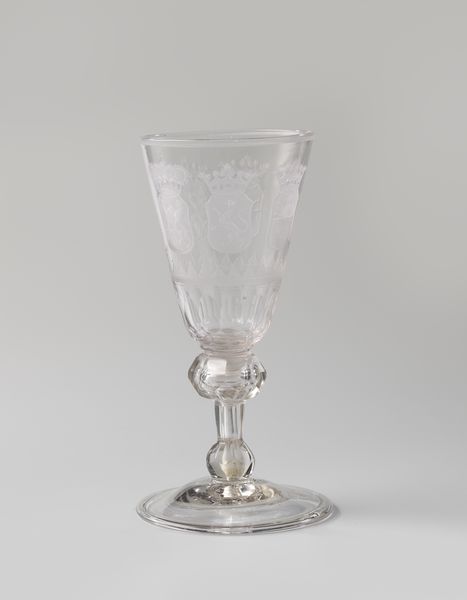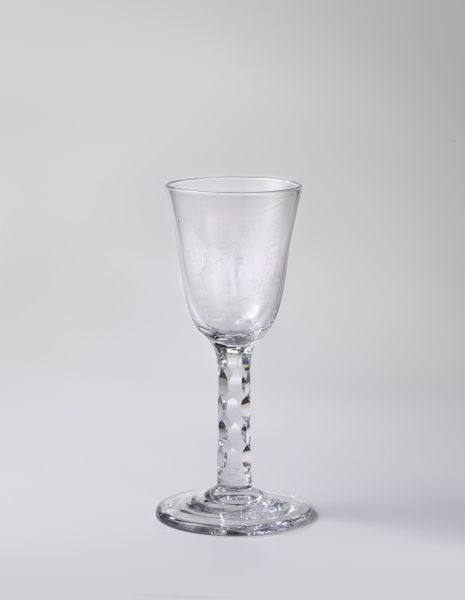
glass
#
glass
#
decorative-art
Dimensions: 4 3/4 x 3 in. (12.07 x 7.62 cm)
Copyright: Public Domain
Curator: My first impression is this is exquisite. It feels almost too delicate to handle. Editor: Indeed. This glassware, simply titled "Glass," dates back to around 1880. Its anonymous creation reflects the pervasive culture of glasswork production in the late 19th century. You see the decanter and glasses, all showcasing intricate designs. It resides here at the Minneapolis Institute of Art. Curator: That's interesting, because the etching... it looks almost mass produced, but the forms are very individual, especially the decanter's handle and stopper. The decoration doesn’t strike me as particularly high art but the way it's constructed shows real expertise. Editor: The tension you identify speaks to the socio-economic landscape of the time. The Industrial Revolution allowed for greater availability of decorative items to a rising middle class, yet older techniques continued. So who bought these? Were these destined for aristocratic dining tables or aspirational bourgeois homes? Curator: Well, looking closer at the design motifs... the feathery etchings on the glass. They suggest maybe exotic flora, fashionable at the time, perhaps catering to a specific clientele eager to display their taste. This suggests a very targeted form of production and consumption. Editor: And it’s important to consider where this piece sits within museum collections. How do these decorative objects tell stories beyond individual artistry, but about systems of power? Glass as a material became incredibly popular as empires extracted resources to fulfill European tastes. Curator: Absolutely. We are presented with a functional object. Consider the hands that made this, probably dividing labor into specific skill sets: glassblowing, etching, finishing. Where was the glass sourced? How were the makers compensated? The true narrative is probably a world away from elegant dinner parties. Editor: Seeing this delicate glass now offers a potent lens for observing cultural exchange and historical narratives, far from simple beauty. Curator: Right, because when you handle a fragile object such as this, its past is made almost present through the labor embedded in its materiality.
Comments
No comments
Be the first to comment and join the conversation on the ultimate creative platform.
